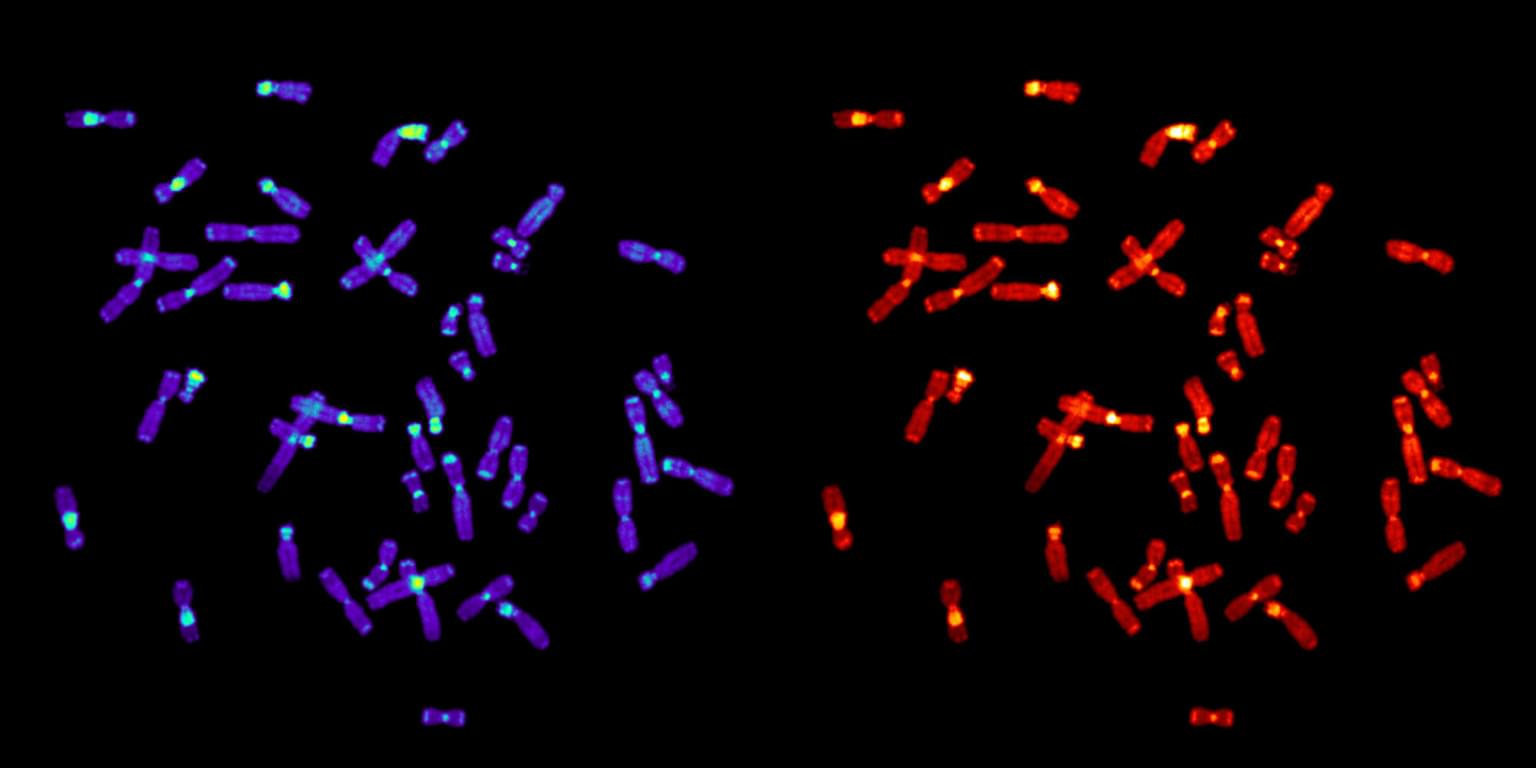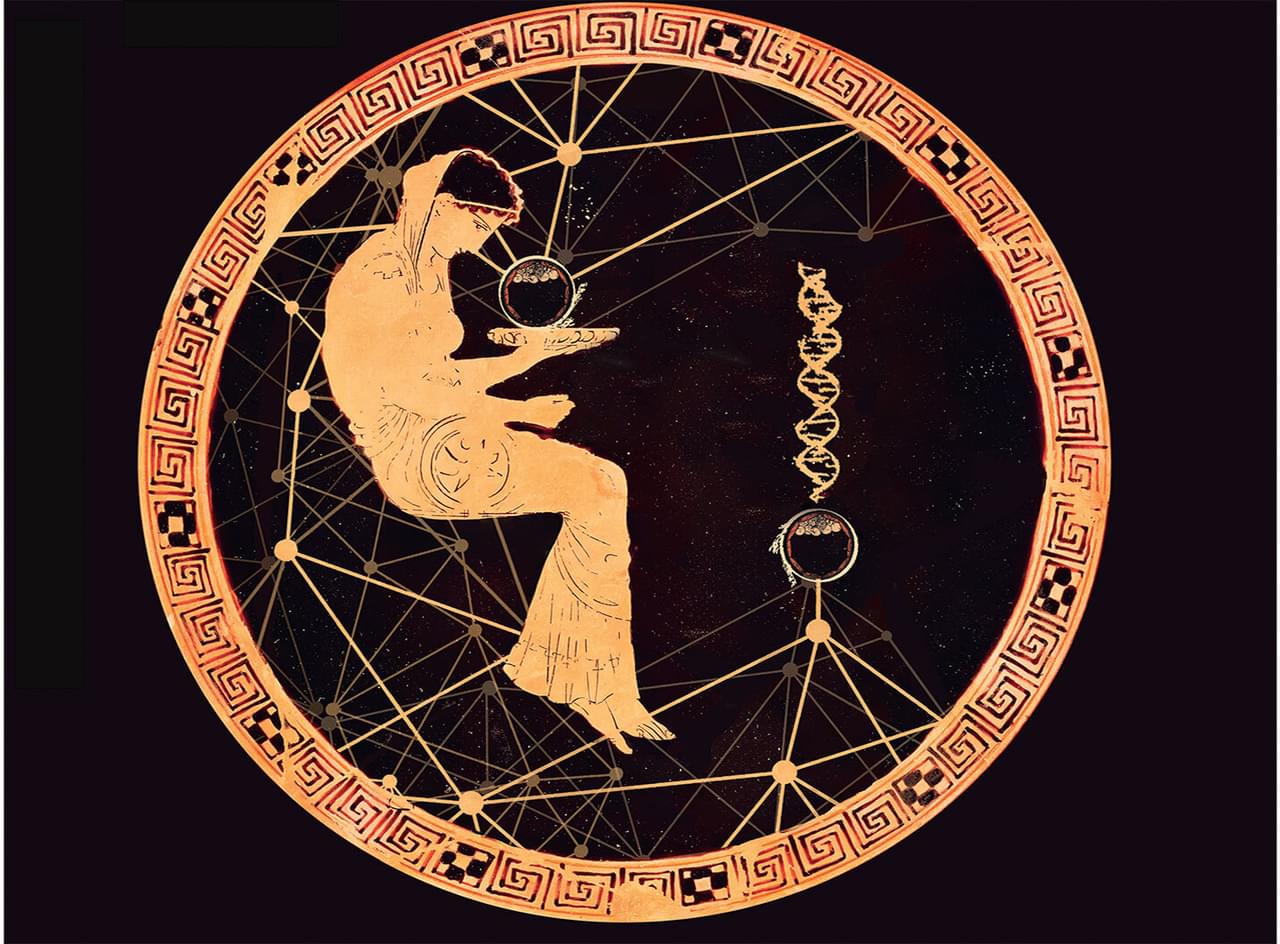News
11 April 2025
Road to Research: Q&A with Alex Garruss, Ph.D., Jim and Virginia Stowers Fellow
“There are few rewards as powerful and as elevating as making a clear, robust scientific observation that advances the field.”
Read Article
News
The multi-institutional study assembling six ape genomes provides a new appreciation for how chromosomes evolve.

Fluorescent microscopy images of gorilla chromosomes labeled with DNA dye depicted in different color scales to highlight heterochromatic (tightly-packed DNA) regions.
By Rachel Scanza, Ph.D.
Published in Nature on April 9, 2025, a new study sequencing and assembling ape genomes represents a significant technical achievement and an invaluable resource to the scientific community. These comprehensive genome assemblies, sequenced at unprecedented resolution, alongside comparative analyses with the recently completed human genome, are advancing our understanding of both primate evolution and our own.
“The high-quality assemblies enable genomic scientists from around the world to ask new questions that were previously impossible,” said Stowers Institute Investigator and Dean of the Graduate School Jennifer Gerton, Ph.D.
The Gerton Lab and Stowers Technology Center scientists were among a consortium of 123 scientists from 62 universities and research institutes spanning the globe that helped in assembling and analyzing all chromosomes of chimpanzee, bonobo, gorilla, Bornean orangutan, Sumatran orangutan, and siamang genomes.

Fluorescent microscopy image of gorilla chromosomes showing chromosome 23 (orange), ribosomal DNA (green), and distal junctions regions (magenta) flanking rDNA arrays in both humans and primates. These segments were not assembled in previous genome reads but are now resolved with the telomere-to-telomere (T2T) assemblies.
Several key findings emerged from the examination of repetitive DNA sequences that have historically been difficult to study. The researchers were able to resolve challenging regions associated with immune responses and identified significant variability—and similarities—in genomic architecture. Specifically, they discovered that the arrangement of genes and genetic regions that rapidly evolve could help explain how the environment and evolution shape primates’ survival and development of new species.
“This work may have wide-ranging implications underlying how primate genomes evolved to allow different species to occupy particular environments,” said Gerton. “As most of these primates are endangered, the new assemblies may also aid in conservation efforts.”The Gerton Lab at the Stowers Institute studies repetitive regions called ribosomal DNA (rDNA), which encode the RNA component of ribosomes, the molecular machines inside cells that make proteins. These regions exhibit high variability in repeat number, both among primates and within human populations, primarily residing on the short arms of chromosomes with asymmetric arm lengths called acrocentric chromosomes. The lab’s contribution to the study highlights unique patterns of rDNA repeats.
The researchers observed that rDNA repeat regions occur on different chromosomes among primates and humans, suggesting that these regions are rapidly evolving. Future studies will focus on how these regions of primate chromosome evolve. The researchers also demonstrate that the number of rRNA gene copies per chromosome and per individual varies greatly. Additional studies in the future will investigate how this variation may be linked to diseases like cancer, infertility, and congenital conditions.
“These assemblies and comparative data, which are freely available to the scientific community, will be a game-changer in our efforts to understand the stability and evolution of primate chromosomes,” said Gerton.
Additional Stowers authors include Sean McKinney, Ph.D., Tamara Potapova, Ph.D., Graciela Monfort Anez, and Matthew Borchers.
The Stowers Institute’s contribution to this work was funded by the National Cancer Institute of the National Institutes of Health (NIH) (award: R01CA266339) and by institutional support from the Stowers Institute for Medical Research. The content is solely the responsibility of the authors and does not necessarily represent the official views of the NIH.
News
11 April 2025
“There are few rewards as powerful and as elevating as making a clear, robust scientific observation that advances the field.”
Read Article
News

09 April 2025
New study shows how we can better learn our genome’s hidden grammar, potentially paving the way for personalized medicine.
Read Article
News

09 April 2025
The multi-institutional study assembling six ape genomes provides a new appreciation for how chromosomes evolve.
Read Article
